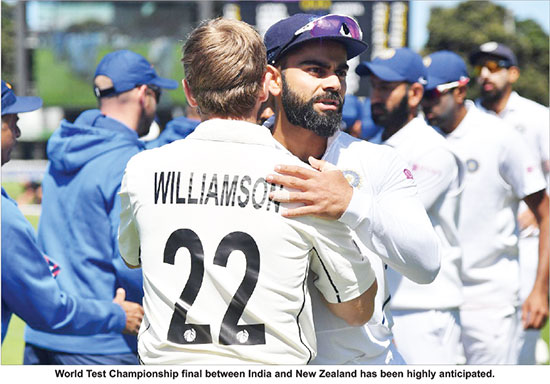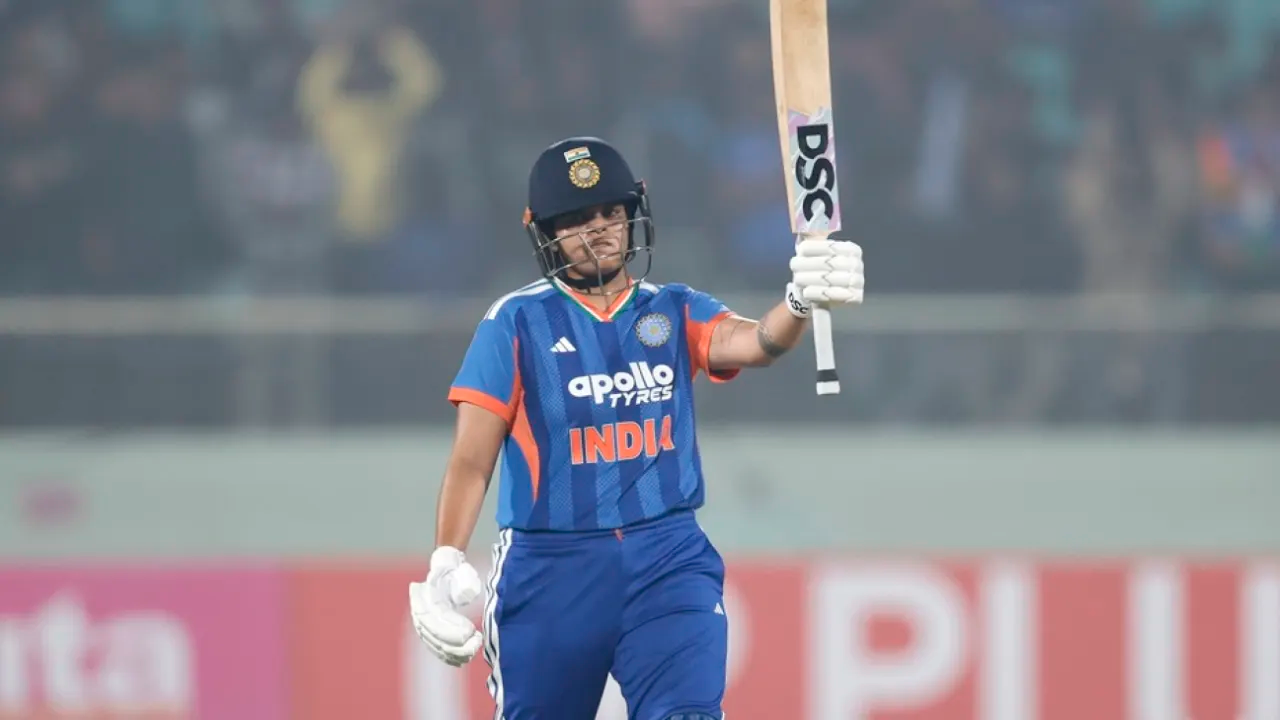Sports
A battle of flare and resilience

by Aravinthan Arunthavanathan
It was a glorious summer evening down under in 2014 December. The Australians breathed a sigh of relief, while the Indian counterparts were left gasping for breath. The stand in skipper had committed the unthinkable. Pulling a long hop straight into the hands of deep midwicket, in the fourth innings of a high-profile Test. That shot could have cost the leadership and may be even the place of the player concerned in the past, but in this case it did not. In fact, it turned out to be a moment which defined the brand of cricket India pledged to play under the leadership of Virat Kohli.
As Kohli walked off the ground distraught, he had lost the battle, but India under Kohli were preparing to win the war. Under Kohli they would not settle for anything less than a victory. The prince waiting in the wings to take over from M.S. Dhoni had walked the talk that day.
Since the turn of 2015, India became an embodiment of excellence driven by aggression. It is no surprise they topped the tables at the end of the World Test Championship cycle. They are an invincible force in their backyard which alone would have guaranteed this place at the start of the cycle. Having seen the way they came back from behind to win the Test series down under in 2020/21, which in fact was rated by ICC as the best Test series ever to have taken place, no one would doubt whether they deserve to be in the finals.
India’s opponents on the contrary are a personification of calmness and values of highest order. If there was a niceness index for overall demeanor, the scale will fail to measure the true value of the Kiwis. But despite being warm in nature, when considering the desire to win they are second to none. Kane Williamson has taken Brendon McCullum’s philosophy forward in his own way.
This was visible in the first Test against England in the recently concluded series. A proactive declaration on the final day with the aim of forcing a result demonstrated what New Zealand cricket is all about. The path of New Zealand to the summit is not as comprehensive as their counterpart’s journey. The highlight is undoubtedly the 2-0 win over India. The series however was closer than what the results suggest.
Mastery of home conditions leading to comprehensive wins against visitors during this period formed the foundation in Kiwis reaching the summit. Two deserved teams with an insatiable desire to win promises, a tantalizing duel in Southampton starting Friday provided a dreaded bubble breach or the English weather do not make an unwelcome entry.
On paper, India should be the favorites on the back of an impressive season, dominated by a great win down under. However, a little bit of reflection will reveal the intricate complexities that can influence the result of this contest.
Both teams are not short of arsenal at their disposal. They are faced with the problem of plenty, especially in the bowling department. The conditions in Southampton will probably provide a perfect balance between bat and ball. With the track routinely having pace and bounce to begin with followed by some degree of wear and tear towards the end combined with fluctuating overhead conditions Southampton promises to be an ideal setting for a high-profile balanced encounter. The swinging ball together with seam has been India’s nemesis. Despite conquering the pace and bounce, India have been exposed in the past when the ball has swung.
The debacle in New Zealand at the start of 2020 is a prime example. How much they have progressed since then is yet to be seen. However at least for the balance of odds India’s coveted line-up is not as strong in England as it is elsewhere.
The Kiwis led by Trent Boult and Tim Southee are masters of swing and seam. Backed by Kylie Jamison and Colin De Grandhomme the Kiwi line-up is well equipped to exploit this weakness in the Indian line up. This duel will be a significant factor in the outcome of this contest.
The Kiwis will be faced with the tough choice of choosing a spinner over most probably Neil Wagner or playing an all-out seam attack. Given the history of the venue and the magnitude of the game, the Kiwis may opt to leave out Wagner and select Ajaz Patel adding the spinning dimension to the attack.
The Kiwi batting line-up in contrast is not the most attractive or celebrated. But there is no doubt regarding their effectiveness. It is a line-up which thrives on resilience than flare. Tom Latham at the top has been consistent across conditions and has been a standout opener in recent times. Kane Williamson and Ross Taylor have struggled in English conditions. With Taylor having an overt deficiency against the incoming delivery, and Williamson not having a good record in England, the Indian seamers would be fancying their chances against the Kiwi batting unit.
The presence of three left-handers in the top order is sure make Ravi Ashwin a trump card. India will not even consider the option of leaving Ashwin out. An inexplicable practice employed in the past to play an additional seamer.
India would look to play Jasprit Bumrah and Ishant Sharma as their lead bowlers. The third seamer’s place will be a toss-up between Mohammed Shami and Mohammed Siraj. While Shami’s experience is invaluable, Siraj has forced into contention with a rapid ascent in stature on the tour down under. Either choice would not have a significant impact as both are extremely efficient.
The threat of Ravindra Jadeja and Ashwin would be a massive threat for the Kiwis. The duo is sure to add value by lengthening the Indian batting line-up too. It is too close to call who has the advantage. The Indian greatness in batting can disintegrate in the face of skillful swing bowling by the Kiwis.
Trent Boult versus Kohli and Rohit Sharma will be riveting duels. Both batsmen would be eager to make amends for their failures in the World Cup semi-final against the same opposition at Old Trafford.
How India’s newest sensations Shubman Gill and Rishabh Pant face their baptism of fire beside the rock solid shielding of Ajinkya Rahane and Cheteshwar Pujara, promises enthralling entertainment. The resilient Kiwi batting can find the high-quality Indian attack too difficult to handle. Ross Taylor overcoming his technical glitch and leading the Kiwis to a world title, first in more than two decades would be a fairy tale ending to one of New Zealand’s modern greats.
Kane Williamson would be more than eager to set his record straight in England and there can not be a better platform than a World Test Championship final. It could go either way. There is absolutely nothing to distinctly differentiate both the teams. Only time would reveal who emerges victorious. India since their 2011 triumph, have experienced a trophy drought despite showing remarkable dominance across formats. The desire for an ICC trophy is on the verge turning into despair.
Kiwis deserve to win at least for the criminal injustice they encountered in the 2019 World Cup final. However, the cricketing world would know the impact of an Indian win in a newly introduced tournament. One need not look beyond the 2007 World T20 see the commercial upside, such a prospect holds. Irrespective of who holds the title at the end of the game, the common fan could be assured that it has all the ingredients to be a battle for the ages.
(The writer’s blog can be found at “Cricketing perspectives” on facebook)
Latest News
Shafali 69 not out , spinners lead India’s rout of Sri Lanka

A quick glance at the head to head record is enough to show the gulf between India and Sri Lanka in women’s T20Is. Despite that, the manner in which India have swept Sri Lanka aside two games in a row would have surprised watchers and the hosts alike. The story in the second T20I followed a similar script to the first. Once again, India’s spinners squeezed Sri Lanka’s middle order before one of their top-order batters made easy work of the chase.
Left-arm spinners Vaishnavi Sharma and N Shree Charani picked up two wickets apiece after Sneh Rana, in the XI in place of the indisposed Deepti Sharma, sucked out the momentum from Sri Lanka’s batting. If it was Jemimah Rodrigues’ half-century in the first game, Shafali Verma was at her brutal best in the second, finishing on an unbeaten 69 in just 34 balls, to help India get to the 129-run target at a run-rate close to 11 an over with 49 balls to spare.
India went 2-0 up at the end of the Visakhapatnam leg, with the next three games to be played in Thiruvananthapuram.
Sri Lanka were jolted in the opening over after being asked to bat. Vishmi Gunaratne’s uppish drive was caught by Kranti Gaud in her follow-through. Chamari Athapaththu then started the charge. After the defeat in the first game, she asked her batters to step up and find ways of scoring. She was intent on leading from the front. She used her feet against Gaud to slash her in front of point. Two balls later, Gaud almost got back at the Sri Lanka captain.
Charani, who dropped two simple catches on Sunday, misjudged Athapaththu’s slash and conceded a six. She charged in from the boundary line and then ran back, missed the ball completely despite a leap. Athapaththu blazed away with the field restrictions on, scoring 31 off 24 balls out of Sri Lanka’s 38 in 5.3 overs at that stage.
After her dismissal, Hasini Perera and Harshitha Samarawickrama continued to bat with high intent. They primarily scored square of the wicket and added 28 in the three-and-a-half overs. And then came the squeeze from India.
On a day she was newly crowned the No. 1 T20I bowler in the ICC rankings, Deepti missed a T20I for the first time since 2019 – after 92 straight games – because of a mild fever. Harmanpreet Kaur has often turned to her when in search of control, but on Tuesday, Rana fit into the role with ease.
Playing her first T20I in India since 2016 – she played 15 away from home in between – Rana’s first task was to stop a belligerent Athapaththu, and she delivered. She kept the Sri Lanka captain guessing with flight and dip before dismissing her. With Athapaththu itching to cut loose, Rana generously flighted one. It landed slightly shorter than Athapaththu expected because of the dip, and she ended up miscuing it to long-off.
Rana then returned with Perera and Samarawickrama scoring at a good tempo, bowled a maiden and that turned the tide. It allowed left-arm spinner Charani to slip in a few quiet overs, which resulted in Perera’s dismissal. Vaishnavi also returned to pick up her first international wicket, with Charani, who denied her in the first T20I by dropping a dolly at short fine leg, taking a simple catch at the same spot after Nilakshika Silva top-edged a sweep.
Sri Lanka hit 11 boundaries in the first nine overs, but could hit only two fours in the rest of their innings. They lost six for 24 to be restricted to a below-par total for the second game in a row, which was never going to challenge the hosts. Three run-outs for a second game in a row did not help matters either.
If Sunday was an opportunity missed by Shafali, she more than made up for it on Tuesday. She was happy to bide her time at the start, with Smriti Mandhana being the aggressor. Once Mandhana fell, caught at point in a bid to hit Kavisha Dilhari’s offspin inside out over the off side, Shafali took centrestage. Inoka Ranaweera’s left-arm spin with the field restrictions in place was just the tonic she needed.
Shafali hit Ranaweera for successive fours in the penultimate over of the powerplay – both by dancing down the track and lofting her over cover. She then took apart Athapaththu’s offspin, hitting here for 4, 6, 4 in the sixth over of the chase: first sweeping a short ball through backward square leg, then thumping a full ball straight into the sight-screen and then lifting one over extra cover.
With the in-form Rodrigues for company, there was no respite for Sri Lanka’s bowlers. Rodrigues also tore into Ranaweera, hitting her for two fours and a six as the left-arm spinner was taken for 31 in her two overs.
In an attempt to maintain the high tempo, Rodrigues holed out to long-on. Shafali soon completed her fifty from just 27 balls. She picked Shashini Gimhani’s left-arm wristspin from the hand and thumped her for back-to-back boundaries in a 12-run over that put India on the brink.
Sri Lanka earned a consolation when Malki Madara’s dipping yorker deceived Harmanpreet. But they knew, as Athapaththu conceded after the game, that the batters failed to make the helpful conditions count in successive games.
Brief scores:
India Women 129 for 3 in 11.5 overs (Smriti Mandhana 14, Shafali Verma 69*, Jemimah Rodrigues 26, Harmanpreet Kaur 10; Malki Madara 1-22, Kavya Kavindi 1-3, Kavisha Dilhari 1-15) beat Sri Lanka Women 128 for 9 in 20 overs ( Chamari Athapaththu 31, Hasini Perera 22,Harshitha Samarawickrama 33, Kavisha Dilhari 14, Kaushini Nuthyangana 11; Kranti Goud 1-31, Sneh Rana 1-11, Shree Charani 2-23, Vaishnavi Sharma 2-32) by seven wickets
[Cricinfo]
Sports
Life after the armband for Asalanka

Stripped of the captaincy on the eve of a World Cup, Charith Asalanka finds himself skating on thin ice. Suddenly, runs are not just runs; they are legal tender. In a game that is brutally transactional, weight of runs is the only currency that guarantees a seat on the flight. The soft will curse their luck and sulk in the corner. The tough roll up their sleeves, take guard, and play the long innings.
History, as ever, offers a handy cue card. Take Arjuna Ranatunga. Axed as captain after the controversial 1991 tour of New Zealand, he was reduced to a mere batter for the 1992 World Cup. What followed was one of the great redemption arcs. A backs-to-the-wall knock at the Basin Reserve against South Africa, with Allan Donald huffing and puffing fire and then that audacious chase against Zimbabwe that rewrote the laws of possibility with the game’s first successful 300-plus pursuit. By the time the confetti settled, Ranatunga was back at the helm, having dragged Sri Lanka to glory almost single-handedly. Asalanka, a fellow left-hander, could do worse than study that script.
When Asalanka took charge of the white-ball sides last year, the sense was that destiny had tapped him on the shoulder. This was a leader in the making, groomed patiently by Sri Lanka Cricket for over a decade. An Under-19 captain, exposed through development squads and domestic leadership roles, he appeared primed to become an all-format captain in due course.
With the bat, particularly in ODIs, he often played the role of the fireman, dousing flames after collapses or steering run chases with a cool head. As a leader, he spoke well, kept the dressing room together and was generous with praise. But just as the talk turned to a long reign, the wheels began to wobble and then, slowly but surely, came off.
Asalanka began treating First-Class cricket like a contagious disease, scarcely turning out for SSC. That absence hurt. The country’s premier club slipped into Division Two, losing First-Class status for the first time in its storied history and his name was firmly in the dock.
Then came murmurs of a clique, largely made up of his Richmond College schoolmates, a charge that rarely ends well in any dressing room. The Asia Cup only deepened the scrutiny. His bowling changes were pedestrian, with holding Dunith Wellalage back for the final over against Afghanistan’s Mohammad Nabi standing out as a tactical misread. The feeling grew that he wasn’t squeezing the most out of his resources.
Pakistan was worse. He looked out of shape, which is never a good look for a captain and the runs dried up in T20 internationals.
When Dasun Shanaka, the man he had replaced, was installed as his deputy, the writing was on the wall in bold capitals. Asalanka, though, failed to read the signs. His brinkmanship in Pakistan, including threats to pull out of the tour, proved to be the final straw.
At 28, Asalanka is still young and this episode may yet prove a necessary dressing down. He is no villain. By all accounts, he is a humble bloke who has momentarily lost his bearings. It happens, particularly to young athletes thrust into leadership before they fully understand the traps that come with it. Right now, he needs support, a steady arm around the shoulder and the chance to rediscover his game.
There is little doubt about his value. Asalanka remains the country’s best finisher, not the sort who clears the ropes four times an over, but the kind who finds gaps, runs hard, rotates strike and before the opposition realises it, has them gasping for air. These are not the fireworks merchants who hog the highlights, but they are the players who win you matches quietly and consistently.
If he is to reclaim his place and perhaps the T20 armband again, the path is simple and unforgiving. Bat first, talk later. In cricket, as in life, nothing silences critics quite like runs on the board.
by Rex Clementine
Sports
Dhammaloka Central College overall champs at Biyagama Swimming meet

The Kelaniya Dharmaloka Central College swimming team won the Overall Championship at the swimming meet organised by the Biyagama Swimming, Diving and Life Saving Association and held at the Kiribathgoda Vihara Maha Devi Balika Vidyalaya Swimming pool recently.
The boys school championship was won by Mahara President College while the girls championship was won by Kadawatha Mahamaya Balika Vidyalaya. The mixed school championship was won by Kelaniya Dharmaloka Central College. The Club championship was won by Yakkala Wave Runners Swimming Academy.
Text and pics by DELGODA W.D.VITHANA
-

 News2 days ago
News2 days agoMembers of Lankan Community in Washington D.C. donates to ‘Rebuilding Sri Lanka’ Flood Relief Fund
-

 News7 days ago
News7 days agoPope fires broadside: ‘The Holy See won’t be a silent bystander to the grave disparities, injustices, and fundamental human rights violations’
-

 News7 days ago
News7 days agoPakistan hands over 200 tonnes of humanitarian aid to Lanka
-

 Business6 days ago
Business6 days agoUnlocking Sri Lanka’s hidden wealth: A $2 billion mineral opportunity awaits
-

 News6 days ago
News6 days agoArmy engineers set up new Nayaru emergency bridge
-

 News7 days ago
News7 days agoOfficials of NMRA, SPC, and Health Minister under pressure to resign as drug safety concerns mount
-

 News7 days ago
News7 days agoExpert: Lanka destroying its own food security by depending on imported seeds, chemical-intensive agriculture
-

 Editorial7 days ago
Editorial7 days agoFlawed drug regulation endangers lives



















